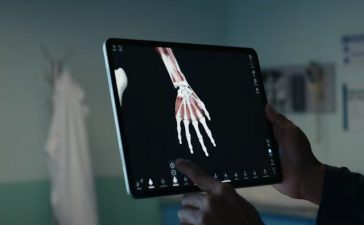The age of generative AI comes with the promise that it will significantly increase productivity. I can certainly see the potential given I’m using a form of it writing this column and it is doing a decent job of anticipating the next word I intend to write. But I’m also noticing that to get the most from this feature, I need to hit the right arrow key, which slows me down considerably. So, I generally end up typing the entire word anyway because the keyboard I’m using doesn’t lend itself to making autocomplete work.
In a nutshell, rather than speeding up my writing (the promise), the impact on my productivity may be negative (the reality) because, when I do hit the arrow key, it breaks my typing flow and forces me to reposition my right hand.
For this kind of AI tool to be a benefit, I’d need to not only modify my keyboard, I’d also need to retrain myself to use the correct arrow key rather than typing the complete word. (This could take a while, given I’ve been typing without doing this for around 55 years.)
The critical path
When we learn about process optimization, we usually discuss a concept called “the critical path.” This is the path a process has that defines how quickly something can get done. If you improve anything but the critical path, the rate at which the process completes is still gated by the untouched critical path and you’re unlikely to see a productivity improvement.
We saw this play out from the initial reaction writers had to generative AI. They were able to create books at an amazing pace, up to hundreds a week, but the critical path was in editing. Editors who were already maxed out couldn’t handle the arrival of hundreds of manuscripts. Many publishers had to stop accepting manuscripts because they couldn’t edit them in time.
The better plan would have been to somehow automate editing first, but that would require far more training for the AI to make sure the manuscripts complied with the publishers’ policies, and that work has yet to be done.
Even if you alter the initial critical path first, you’re likely to find other dependencies that then become the new critical path, substantially limiting any benefits until that new path is also improved.
Measuring productivity: cars and people
I’m into cars. With cars, you measure performance on a machine called a Dyno, and you learn quickly that horsepower alone doesn’t increase performance. The car still must make it down the track and put that power down to the road. Traction, suspension, driver skills, weight, placement of the drive wheels, weight transfer under acceleration, leans, aerodynamics, heat, and the reliability of parts all play equally critical roles. The only true test of performance isn’t horsepower or torque— it’s how the car performs competitively.
Compared to people, cars are simple. People have a variety of different tasks that they often have no control over. Inbound email, unanticipated problems, co-workers that need to chat about a project, distractions (and there are a ton of those), and managers whose quality can be highly variable — all affect productivity. (A bad manager can destroy the productivity of a department just by introducing excess drama.)
Or think about what happened during the COVID-19 pandemic. Initially, we thought working from home was more productive than going into the office because there were fewer distractions. What we found out was that employees were working longer hours, blowing up their work/life balance, and either getting burned out or leaving. We also found that people who could focus, were often introverted, and had strong work skills did, in fact, do better at home. Highly social people or new employees, or those who had problems focusing and didn’t have strong work skills, didn’t do well at all.
Applying a cookie-cutter approach to employees doesn’t work. Everyone is different and any discussion about departmental productivity needs to take into account the dynamics of the workplace regardless of where it is, and the unique nature of each employee. Remember, the goal of any productivity-focused change is better productivity not yet another problem.
Where we need AI to focus
When it comes to productivity improvements, the first step must be to analyze where improvements are needed, identify the critical paths, and then develop a plan that will have the greatest impact on productivity at the lowest cost. But many companies tend to move without those initial measurements or understanding, and productivity improvement goals are often missed.
More importantly, there’s a good chance that efforts to improve productivity will make things worse. Years ago, one of my clients had a “productivity problem” and instituted a program called “back to basics” — employees had to clock-in and clock-out because management was convinced they were skipping out on work. The result was a catastrophic drop in productivity because the people that were slacking off just did so at work rather than going home early, and those that had been working long hours to get things done started working 9-to-5. Soon, top performers started to look for jobs at firms that trusted them more.)
In short, you need to understand a problem well to fix it effectively. While generative AI could help with this, I’m aware of no one yet who’s focusing this technology on this critical problem. If you don’t understand who your employees are, what they do and how they do it, you can’t use digital transformation and generative AI to suddenly make them better. You’re more likely to make them worse.
Copyright © 2023 IDG Communications, Inc.












